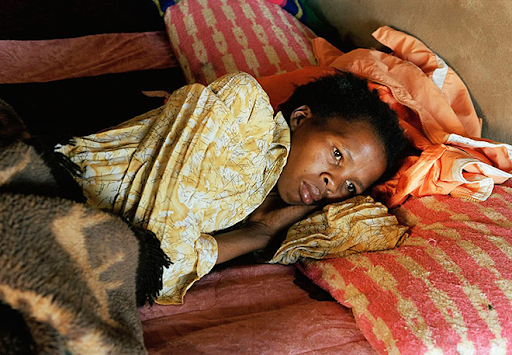By Nii B. Andrews.
Today the camera appears ubiquitous; at some point everywhere someone is taking pictures with their mobile phone.
There is a deluge of images and the question then becomes, what pictures if any are necessary to bear witness.
Many of the images produced are barely looked at nor understood by the public; many of images are often manipulated or misconstrued.

It was in 1993 at the Broderip and Charles Bell wards in London’s Middlesex Hospital that the South African born photographer, Gideon Mendel had his first encounter with HIV/AIDS and it greatly impacted the course of his life and subsequent photographic output.
Over many weeks Mendel spent a lot of time on the wards and made many photographs of the patients, their families and healthcare staff.
All of the photos were taken with the express consent of the institution and the participants.

The composite result was a uniquely powerful visceral record of a very distinct and tragic time – the era before antiretroviral medications had become available. The series is entitled THE WARD.
An overwhelming sense of melancholia and pathos is evident in Mendel’s work.
All of the patients on the wards, many of whom were young, gay men, were having to face the terrifying prospect of an early and painful death.

Over a decade later, Mandel in reviewing that period of his career wrote:
“More than anything else in my career, working on this subject has challenged the whole fabric of my craft.
How does one convey the immense scale and horror of HIV/AIDS, while also portraying the dignity and strength of the many people who live with the disease, and indeed the many more who have died without the treatment that could have saved their lives?”

In view of the malice, stigma and atavistic fear directed towards gays and patients with AIDS at the time, the decision of these patients to allow themselves, alongside their families, lovers and friends to be photographed was an act of boundless humanism, graciousness, and bravery that was aeons ahead of that exhibited by their vociferous and pathetic detractors both then and today.
Mendel later went on to explore, at a very personal level, the meaning of access to treatment through its impact on Lusisiki’s inhabitants located in a rural part of the Eastern Cape in RSA.

Once again each patient had bravely decided to share their experiences publicly, in the hope of preventing others from being infected. That series was entitled WE ARE LIVING HERE.
Both of these series and many others in Mendel’s portfolio attest to his role as an unflappable witness to the vile and tragic consequences of bigotry while simultaneously recording the resilience of the human spirit.
His work has been featured in publications including National Geographic; Fortune; Conde Nast Traveler; and The Sunday Times Magazine. His first monograph A Broken Landscape: HIV & AIDS in Africa was published in 2001.


